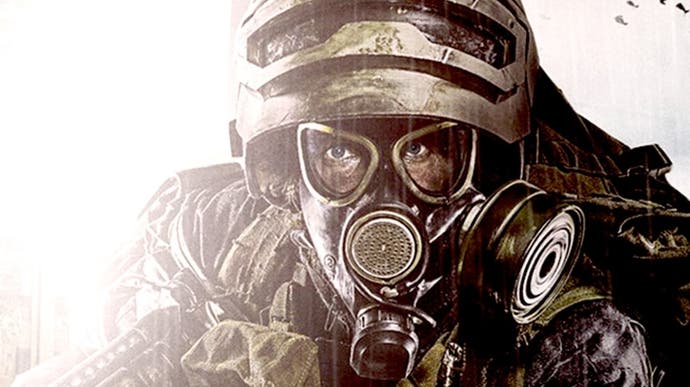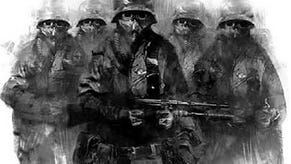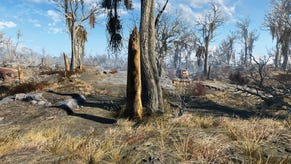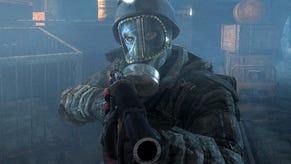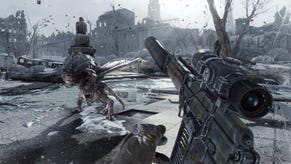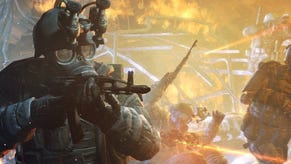Metro Redux on Switch: just how close to PS4 does it get?
4A Games itself handles the port with terrific results.
Over the last ten years, 4A Games has built a reputation for pushing technology to new heights - from the original, remarkable Metro 2033 to last year's Metro Exodus - an open world showcase with beautiful ray traced global illumination. However, the firm also enjoyed success with their current-gen Metro Redux remasters, and now those titles are available for Nintendo Switch. Yes, it's another Switch port we're tackling but this time, the original developer has taken point on bringing the games across and as it's 4A you know you're in for something special.
For those unfamiliar, the first two Metro games are first-person shooters set deep within the radiation ravaged Metro system beneath Moscow. With limited supplies, players make their way through the underground (occasionally venturing to the blasted surface) while dealing with a wide range of foes. Stealth, combat and storytelling are all part of the experience, with both games offering a unique atmosphere quite unlike anything else on the market. It's also the first time a Metro game has appeared on a Nintendo platform and it's also the debut for the franchise on what is essentially mobile hardware. On top of that, the port hasn't been handed off to a separate developer as is often the case - 4A rolled up its sleeves and dug in for this one, producing a fascinating piece of work.
To begin with, we can confirm that this is indeed the newer, more modern Redux version of the game - not a conversion of the last-gen Xbox 360/PS3 renditions, which may have been more suited to the power level offered by the Nintendo hybrid. Comparing Xbox 360 to Switch, the differences are stark. Redux offers improved textures and models, a new lighting and materials model and more detail all around. Metro 2033 is a very, very different experience all around, while the sequel - Metro Last Light - also enjoys all of the improvements made for its transition to PS4 and Xbox One.
Side by side, Switch Metro is remarkably similar to its current-gen console counterparts but the reality is that some compromises were needed - and this process starts with image quality. Yes, resolution is lower, but the full story is somewhat more complex. A lot has changed since the original release on PS4 and Xbox One. If you look back at older Digital Foundry content, matters of resolution used to be simple. In the case of Redux, you had a fixed pixel count of 1080p on PS4 and 912p on Xbox One. Both versions used a form of post-process anti-aliasing as well. It was the same story for many games early this generation - fixed pixel counts and basic post-process anti-aliasing made getting a handle on relative image quality a straightforward enough exercise.
However, in 2020, we're moving into what is effectively the post-resolution era. A simple pixel count no longer tells the whole story and certainly doesn't encapsulate the difference in visual quality. This has been the case for many recent games over the past few years but Metro Redux offers a remarkable stark comparison due to its earlier release on PS4 and Xbox One. The Switch lacks the hardware muscle to push through the same pixel count and simply running at a lower resolution with FXAA would produce a messy, aliased image.
The solution is what 4A calls temporal super resolution - which seeks to achieve clean edges while minimising artefacts. If you count pixels, the effective resolution seems to hang around 1280x720 docked, but pixel counts are only possible in motion when the TSR tech fails on specific edges. 4A itself pegs docked play at 1080p, but regardless, there are many variables that can lead to variations in image quality depending on what's happening on-screen. It's very dynamic, you can expect the current frame to vary significantly in terms of pixel count and the image you're presented with at any point will, of course, include a lot of data reconstructed from previously rendered frames.
That said, the overall resolution target is clearly lower than PS4 and Xbox One, and there are some visible artefacts which lead to the perception of break-up in fast-moving areas. Alpha buffers also appear to deliver a quarter resolution output, so flames appear rather chunky in comparison to PS4.Still, this type of image reconstruction is becoming increasingly common to the point where there's a very strong argument that pixel-counting is now becoming an academic point of interest rather than any kind of actual measure for image quality. In terms of Metro Redux on Switch, the basic reality here is that the picture is generally less than sharp than PS4 or Xbox One, but typical signs of lower resolution - edge aliasing and temporal shimmer - are not present.
Switch's portable mode is a slightly different story. The primary pixel count seems to come in at 720p - a match for the display - but due to the same reconstruction techniques, it winds up looking extremely clean and sharp on the Switch's internal LCD. Image quality is simply superb and much cleaner than other comparable ports such as Wolfenstein 2. It's really one of the best presented Switch games in portable mode. The video on this page tells the full story, and it's fascinating. Again, it is possible to detect countable pixel edges when the reconstruction technique fails, and it's there were we can see what looks like 480p at the lowest count. However, these moments are uncommon and don't adequately represent actual gameplay. Hopefully, the video and screenshots demonstrate that image quality holds up remarkably well.
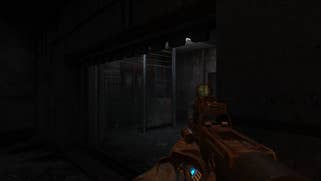
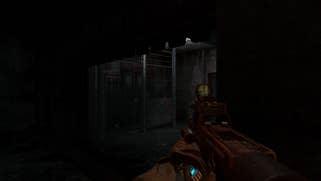

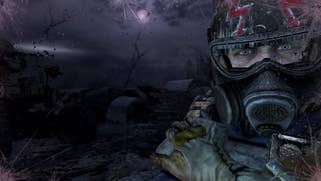


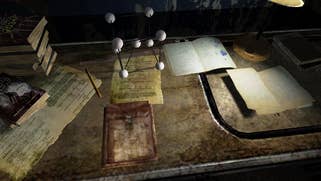


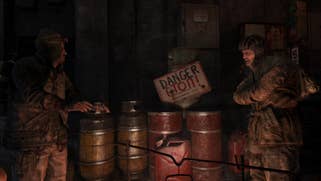
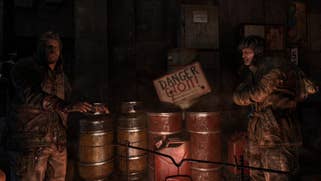
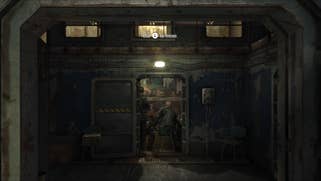

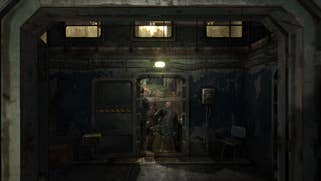

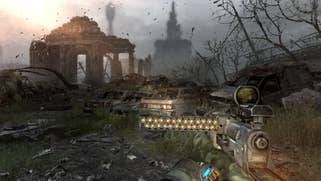

Looking at both docked and portable presentations, I feel that the portable mode looks better overall but it has its own drawbacks. Metro is a very dark game that relies on a lot of deep shadows and empty space to increase atmosphere. It looks good on a CRT or OLED monitor, of course, but the Switch uses a mediocre LCD panel and the backlight glow is painfully obvious making it look somewhat less impressive and more difficult to see. So, that's something to consider - this isn't the kind of game you want to play in a brightly lit room, but it's difficult to envisage how 4A could adapt to this without substantially revamping areas of the game.
Elsewhere, the port continues to impress. In terms of visual detail, the Switch version compares very favourably to PS4 with virtually everything carrying over intact bar, some of the higher quality textures. There are definite shades of Alien Isolation here in that almost every key elements transitions across from PlayStation 4 almost perfectly. In fact, Redux goes further in some respects. Alien Isolation received some criticism for additional input latency but 4A's efforts here are crisp and highly responsive. Even though performance is limited to 30 frames per second, the team has perfectly tweaked analogue stick dead zone and sensitivity while ensuring fast input response. It feels fantastic to control with the Pro controller and it's still superb on the Joy-Cons.
Metro also supports full 5.1 surround sound - a feature that is often missing in Switch games, I've found. Here, the game makes active use of all surround channels just like the other versions of the game. Audio quality is also top notch without any significant compression. The final area of change in Metro Redux is inevitable: frame-rate. On PS4 and Xbox One, Metro Redux runs at 60 frames per second and both consoles maintain that performance very well. It's an extremely smooth, stable game. Meanwhile, on Switch, 4A opts for a properly frame-paced, pretty much locked 30 frames per second. It's a compromise we've seen on many challenging Switch ports - especially the id Tech 6 conversions from Panic Button.
There's a big difference with this one, however: the performance is extremely solid. Starting with Metro 2033, I ran a full hour of gameplay through our tools and determined that the frame-rate was locked to 30fps throughout with only one or two rare missed frames or spikes. It's remarkably solid. It's the same with Metro Last Light too - it took forensic analysis of performance across hours of content to find any kind of hiccup to performance at all and even then, the effect is so fleeting it's hardly an issue. It's this aspect that sees Metro Redux stand apart from the other highly challenging Switch ports we've seen. Sub-30fps compromises are commonplace elsewhere but with Redux, it is essentially locked.
The same is true in portable mode, by the way, which also turns in a very stable frame-rate - most of the time. During the introduction to Metro 2033, I did note a moment when the game hitched resulting in a visible skip but it cleared up quickly. From thereon out, it's business as usual. Compared to the various other FPS conversions out there, Metro Redux is perhaps the best yet. The consistency and fast input response make for a very enjoyable experience overall.
Up until this point, you may be forgiven for thinking that this port is nigh-on perfect, but there are a couple of areas where I'd hope to see some improvements. First of all, the rumble support isn't exactly nuanced and as it stands, it detracts from the atmosphere the game generates - I turned it off. Secondly, loading times can be protracted on certain stages. In some cases, loading is slower than PS4 but still very reasonable and not a huge issue but elsewhere, it can take dramatically longer to load a stage than any other version of the game. In this case, I had installed the game to an SD card which is slightly slower than any other method so you may see subtle improvements when using internal memory or the game cart itself. The silver lining here is that loading upon death is very quick, which at least removes further frustration once you've back to playing the game.
Overall, looking at the package as a whole, this is an impressive release. The visual quality is comparable to the earlier releases of Redux and the average pixel count is higher than many other comparable conversions such as Wolfenstein 2 or Doom 2016. Meanwhile, seeing this game play out so well in portable mode really is a treat. Similar to other Switch FPS ports, the frame-rate is cut in half but it's very consistent and input latency is very low so it still feels great to play. The sometimes extended loading times really are the only major issue I encountered during testing and even that is variable depending on the stage.
As for the games themselves, well, it's interesting to revisit them after spending time with Metro Exodus. The stealth gameplay remains solid - clearing rooms of enemies and quietly working your way through is as satisfying as ever, but there's also a lot of downtime. These games were released during the height of the 'cinematic scripted' shooter craze and you spend a lot of time following NPCs around as they perform actions or engage in conversation. Metro Exodus has its fair share of this too but it lets players off the leash more often. That's the one thing I'd really like to see improve in whatever 4A does next: a game which leans into the atmospheric potential of this world while leaving characters on the sidelines. Even still, the games are both still engaging and interesting to play through today. Once you get through the lengthy introduction sequences, the gameplay opens up nicely as well and there are some absolutely fantastic moments to enjoy.
Metro Redux is a unique experience that has somehow managed to translate over beautifully to Nintendo Switch - and 4A Games' reputation for technical excellence is demonstrated yet again. We'll be talking to the developer soon about the process of bringing these titles to the Nintendo hardware, how the team utilises the Switch's Nvidia-deevloped NVN low-level graphics API and how the team is preparing for the transition to the next generation of Sony and Microsoft consoles. Look out for that - it should be very interesting!
